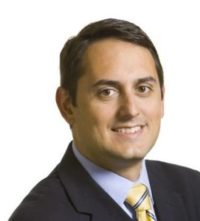The Right Note is a weekly opinion column published on Thursdays. The views and opinions expressed in the column are those of the author and do not necessarily reflect the views of ARLnow.com.
 Yesterday, our nation commemorated the 50th anniversary of the March on Washington. The March, of course, was 100 years after President Lincoln freed the slaves with the Emancipation Proclamation. Today, I wanted to call attention to an important part of our history here in Arlington that took place in 1863.
Yesterday, our nation commemorated the 50th anniversary of the March on Washington. The March, of course, was 100 years after President Lincoln freed the slaves with the Emancipation Proclamation. Today, I wanted to call attention to an important part of our history here in Arlington that took place in 1863.
On May 5, 1863, Lieutenant Colonel Elias M. Greene, chief quartermaster of the Department of Washington, and Danforth B. Nichols of the American Missionary Association officially selected the Arlington Estate, or Custis-Lee plantation, as the site for Freedmen’s Village. The site would later become a part of Arlington National Cemetery.
The Village was formally dedicated on December 4, 1863, and the site was intended to be a model community for freed persons. Originally, 100 former slaves settled on the site – eventually growing to over 1,000 residents. There were over 10 frame houses, 50 two-story duplex houses, two chapels, a school with five teachers, a meeting hall, a hospital, and a home for the elderly and infirm.
While the Freedmen’s Village was eventually closed around the turn of the 20th century, many Arlingtonians still trace ancestors back to it. Residents from the Village helped found the communities of Penrose, Hall’s Hill and Nauck.
Penrose, for example, was originally known as the Butler-Holmes subdivision. It was named after William Butler and Henry Holmes – two leaders in the Freedmen’s Village who held public office before developing land for housing. The Butler-Holmes subdivision was turned from a few parcels of farmland into multiple free standing dwellings.
The Penrose neighborhood was home to Dr. Charles Drew. He was the first African American to receive a Doctor of Science in Medicine, and he became Head of the Surgery Department at Howard University. He gained international acclaim for his scientific advances in the field of blood plasma transfusion research. The Drew Model Elementary School and Community Center in Arlington bears his name as a tribute to him – as do several other institutions of learning across the country.
Of course, the stories could go on and on, and I am only able to barely scratch the surface in this column. If you have a few minutes today, I encourage you to read through this “walking tour” brochure from the Black Heritage Museum of Arlington to learn a little bit more.
We truly have a rich history here in Arlington. I hope from time to time we all take a moment to understand, appreciate and learn from it.
Mark Kelly is a former Arlington GOP Chairman and two-time Republican candidate for Arlington County Board.


